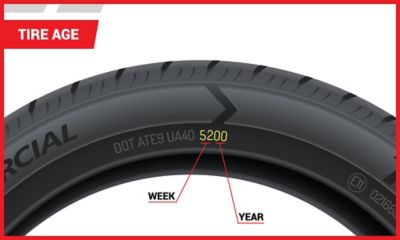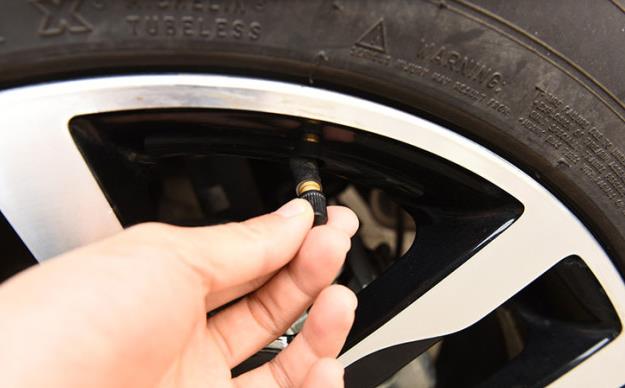Tire Date Code and How to Read It
If you've ever wondered how old your tires are, it's an easy bit of information to find out.Tires actually have a "born-on" date, and it's listed right on the tire itself.
How Old are Your Tires?
Almost everything you need to know about your tires is molded into the sidewall and coded according to federal requirements, including the specific week and year when a tire was made.
To read the date on a tire, look near the edge of the rim for a series of characters starting with the letters DOT. This is the Department of Transportation (DOT) code, which indicates that the tire has passed all minimum DOT standards for sale in the United States.
This code can tell you the manufacturer of the tire and the factory where it was made, as well as provide lot-specific information used for tracking in case of a recall.
The last four digits of this code tell you when your tire was manufactured. The first two numbers indicate what week of the year it was made (out of 52 weeks per year), and the second two numbers represent the year. For example, 5200 would reveal that a tire was manufactured during the 52nd week of the year 2000.
Prior to the year 2000, DOT coding was slightly different. If you have a tire that doesn't match the coding you see in our example, it was likely manufactured before 2000 and should be retired as a safety precaution.
How to Properly Store Tires for Increased Life
If you're a driver who swaps out tires for the season — winter tires replace your summer tires and back again — proper storage of your tires in the off-season will help protect them from the elements and delay the aging process.
These storage tips can help extend the life of your tires:
Clean your tires with soap and water. Remove all grime, dirt and brake dust with a tire brush and allow them to dry completely.
Place each tire in its own plastic bag, which you should make sure is as air tight as possible. Heavy-duty lawn and leaf bags are a good choice.
Find a cool, dry location, such as a garage or basement, where the temperature doesn't fluctuate and there is less humidity.
Store the tires raised off the floor on a piece of clean wood, and line them up in a row with the tires sitting vertically side-by-side instead of stacking them horizontally on top of each other. This will help reduce stress and potential distortion.
It's always a good idea to have a tire professional inspect your tires when having them reinstalled on your vehicle after storage. Also, for tires mounted on vehicles in storage, you should take the vehicle out for a drive on a weekly basis. This will flex the tires and maintain oil dispersion within the rubber compounds.
No matter how old the tires are, the most important aspect of tire safety is regular maintenance and inspection.

























